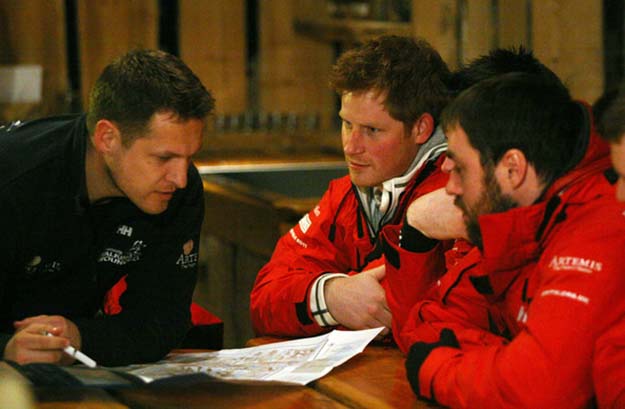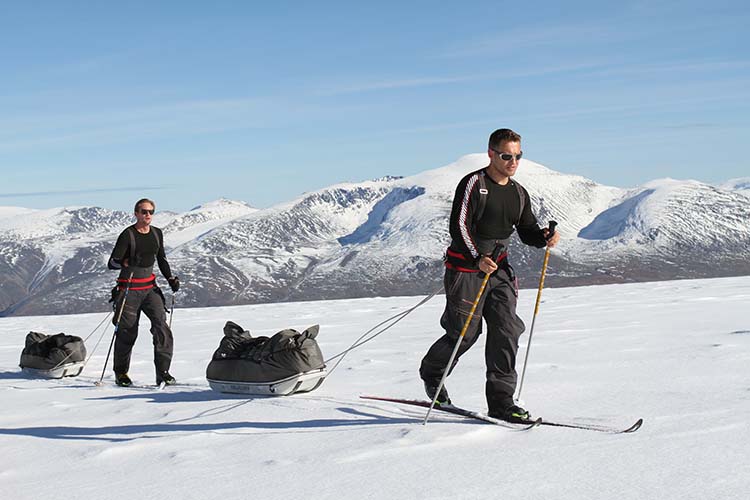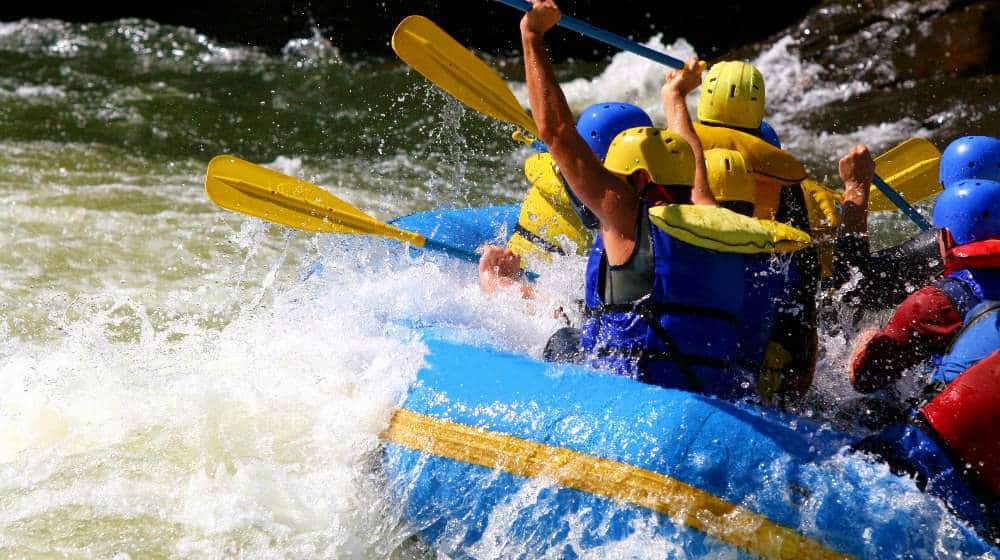Interviews
International Mountain Guides: Inge Solheim

Our Exclusive Interview with (INSANELY) Accomplished Outdoorsman and Motivational Speaker
Growing up in the small village of Otta in Norway, Inge Solheim spent his childhood exploring the mountains and hills of the region. “What city people call ‘being outdoors,” Solheim says, is just the everyday way of life in Norway.
Maybe that’s why he speaks so humbly of his work and accomplishments. Though Solheim has spent his professional life guiding high-profile expeditions in remote locations such as the North Pole and the Himalayas, organizing logistics for several popular nature films and television series, and speaking to audiences all over the world, he says his job is a simple one.
“My role is to bridge the gap between people’s ambition and their ability,” Solheim says. “I make people competent, and that’s probably the most important thing I do. I facilitate a safe arena for them to experience and explore nature.”
And he does it well. For over twenty years, Solheim has led expeditions all over the world (though, unsurprisingly, he says he feels most in his element in cold regions like the one he grew up in.) His clients include everyone from actors like True Blood’s Alexander Skarsgard to international businessmen and everyone in between. The variety, he says, it what makes things interesting.
“I’ve had students on expeditions that have been skiing next to multinational business people, and the beautiful thing about nature is that it evens out the differences between people. It’s an equalizer,” Solheim says. “The student saved up and hustled for a year to get the money to do the expedition, while the executive just took 10% of his lunch budget and just paid it. But out there, everyone’s equal, which is beautiful.”
One of Solheim’s best-known and most rewarding expeditions was called Walking with the Wounded. In April 2011, Solheim and Prince Harry led four injured soldiers on an expedition to the North Pole. Their journey was filmed and televised on a BBC series called Harry’s Arctic Heroes.
When Solheim first heard about the project, he knew right away it was something he wanted to be involved in.

Inge and Prince Harry work together on “Walking with the Wounded”
“In 2010 two guys approached me; one was Edward Parker and the other one was Simon Daglish,” Solheim said. “They had just founded Walking with the Wounded after Edward’s nephew got injured in Afghanistan and lost both his legs. That inspired them to create Walking with the Wounded, and they started to raise money and awareness about wounded soldiers, rehabilitation and life after their military career. They heard my name from some people and they came to me and asked me, ‘Inge, do you think it’s possible to take wounded soldiers to the North Pole?’ And I thought about it for a while – about two and a half milliseconds – and said, ‘Yes. Of course it’s possible.’”
Another Walking with the Wounded expedition, not led by Solheim, took place in 2012 – this time to Mount Everest. Unfortunately, due to rockfalls and other hazardous conditions, the expedition was cut short before the adventurers could reach the peak.
Solheim joined back up with the charity in 2013, this time teaming up with actors Alexander Skarsgard and Dominic West as celebrity guides. Together they led a group of 12 injured soldiers from Great Britain, Australia, Canada and the United States on an expedition to the South Pole.
It was on this expedition that Solheim observed what he describes as one of the most inspirational moments of his career, when Royal Air Force veteran Duncan Slater became the first double amputee to ski the South Pole.
“Before he was selected [for the expedition], he was really low. [But] he lifted himself up, got through it, trained really hard – trained harder than anyone, because no one thought that a double amputee could do it. And I said, ‘I see a will in his eyes that tells me that he’s going to do what it takes to get there,’” Solheim says.
This can-do attitude is the defining feature of Solheim’s career and philosophy. When faced with a challenge that may seem insurmountable, or when a client has lofty goals, he sits down with them and figures out a way to make their dream a reality.
“If someone is really not fit and comes to me and says they want to climb a very difficult mountain with no climbing experience, I have to adjust their ambition or adjust their timeline,” Solheim says. “I say, ‘I don’t think you can do that mountain,’ or, ‘I think it will take two years to be ready for that mountain.’ My goal is to move the parameters so that we can succeed.”

Inge Solheim and actor Alexander Skarsgard skiing in Norway
He calls this “calibrating your courage to fit your ability,” and Solheim says this mindset is the key to success. It’s not about setting records or being the best in the world. It’s about being your personal best, challenging yourself and giving it all you’ve got.
“I judge an achievement from how much it costs you to reach it,” Solheim says. “It’s all relative to how much did it take you mentally and physically to do. For some people it’s a struggle to just get out of bed.”
Sometimes a client’s biggest obstacle can actually work in their favor.
“For many years I’ve done expeditions, trips and TV productions with so-called disabled people. I say ‘so-called’ because these trips have proven that what was perceived as a disability, these people have somehow turned to their advantage either mentally or physically. They’ve turned it around and it doesn’t really disable them much anymore.”
One such story is that of Mark Pollock, the first blind man to go to the South Pole. Pollock came up with a special design wherein he stitched his neck gaiter, hat and goggles to a central point inside his jacket’s hood so that he could easily keep up with all of them. When he went to show his design to Solheim, a sudden realization occurred to him.
“He put on his neck gaiter first, then his hat,” Solheim says. “But as he was putting his goggles on he said, ‘Hmm, I don’t really need goggles, do I?’…So he took the goggles out and put his neck gaiter up to his mouth and pulled his hat down over the tip of his nose, and he was the only one who didn’t have frostbite on his face that year. His blindness turned out to be an advantage.”
Solheim’s optimism and zen outlook on life and adventure seem almost out of place among doom and gloom that is often present in the survival community. In truth, Solheim doesn’t identify much with other well-known “survivalists” like Bear Grylls. He says the drama you see on television “survival” shows is often manufactured and amped up for effect. It’s misleading, he says, and does a disservice to true outdoorsmen and to nature itself. Solheim prefers to take a different, more natural approach.
“The drama [my clients] get is what nature delivers and what’s happening inside them. Most of the time you couldn’t even produce it, it’s so good and it’s so much more powerful than what they could fake on these programs. Nature in itself has more than good enough drama.”
Any budding outdoorsman watching shows like this on TV should not become discouraged. Solheim believes that anyone can be an outdoorsman and that no one should let themselves become intimidated by the potential dangers or fear of the unknown.
“People think that the barrier for having an active life outdoors or to explore is really high, but the truth is that the relative danger is very small. In fact, you’ll find that people who hesitate to go outdoors and to explore would find that the learning curve is so steep and so joyful. My message to them is just to go out and do it. Reconnect with nature.”
So what are you waiting for? Get out there and experience nature. You’ll be amazed what you’re capable of.
What’s your greatest outdoor adventure? Share it with us in the comments below!
For awesome survival gear you can’t make at home, check out the Survival Life Store!
Follow us on Facebook, Instagram, Twitter, Pinterest, and Tumblr!
**Disclaimer: All content on this site is for informational purposes only. Please read our full disclaimer .**
Editor’s Note: This post was originally published on February 22, 2016, and has been updated for quality and relevancy.
-

 Do It Yourself7 months ago
Do It Yourself7 months agoParacord Projects | 36 Cool Paracord Ideas For Your Paracord Survival Projects
-

 Do It Yourself9 months ago
Do It Yourself9 months agoHow To Make Paracord Survival Bracelets | DIY Survival Prepping
-

 Do It Yourself9 months ago
Do It Yourself9 months ago21 Home Remedies For Toothache Pain Relief
-

 Do It Yourself10 months ago
Do It Yourself10 months agoSurvival DIY: How To Melt Aluminum Cans For Casting
-

 Exports8 months ago
Exports8 months agoAre Switchblades Legal? Knife Laws By State








Pingback: Protecting a City and Guarding Our Nation | SL
Pingback: Protecting a City and Guarding Our Nation | Survival Life
Pingback: Protecting a City and Guarding Our Nation | Savvy About Survival
Pingback: Protecting a City and Guarding Our Nation - The Right News Network
Pingback: Amazing Hiking Trails You Have To See To Believe | Survival Life
Pingback: Amazing Hiking Trails You Have To See To Believe - Survive!
Pingback: Amazing Hiking Trails You Have To See To Believe
Pingback: Amazing Hiking Trails You Have To See To Believe | Primitive technology
Pingback: Amazing Hiking Trails You Have To See To Believe – Ultimate Survival Alerts
Pingback: Episode 265: Mike Hernandez Sits Down with the Founder of Expedition Overland Clay Croft [PODCAST] – The Self-Sufficient Life